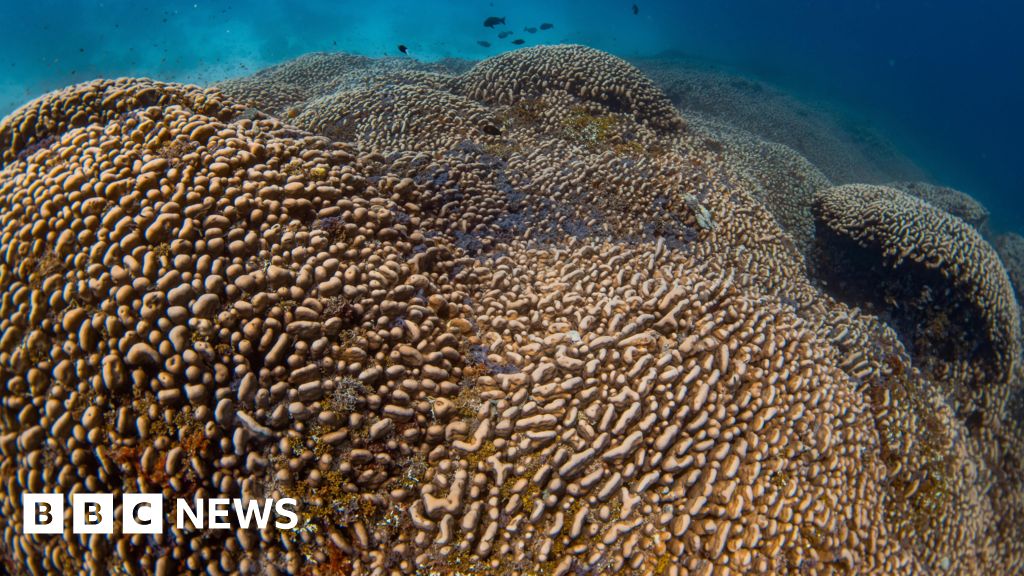


“I went diving in a place where the map said there was a shipwreck and then I saw something,” said Manu San Felix.
He called over his diving buddy, who is also his son Inigo, and they dived further down to inspect it.
Seeing the coral, which is in the Solomon Islands, was like seeing a “cathedral underwater”, he said.
“It’s very emotional. I felt this huge respect for something that’s stayed in one place and survived for hundreds of years,” he said.
“I thought, ‘Wow, this was here when Napoleon was alive’,” he added.
Scientists on the expedition measured the coral using a type of tape measure under water. It is 34m wide, 32m long and 5.5m high.
Globally coral is facing severe pressures as oceans warm with climate change.
Corals are made of hundreds of thousands of living organisms called polyps, each with its own body and mouth, which grow together as a colony. Some corals grow hard, outer skeletons and when many of these fuse together they form a coral reef.
Some of these reefs can extend for huge distances, forming vast structures where fish and other species live.
Coral reefs also underpin the livelihoods of one billion people including by supporting tourism or fishing, according to the World Economic Forum., external